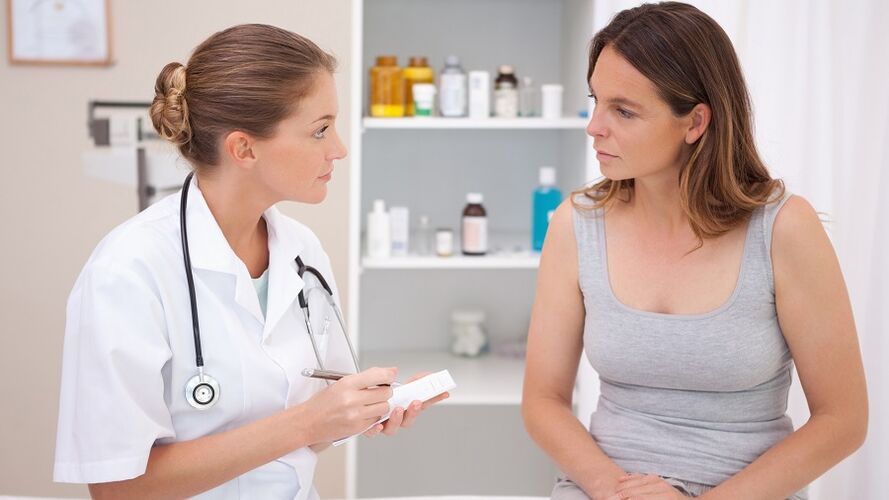Chronic uterine pain syndrome is also called pelvic organ varicose or uterine varicose veins. This disease is more common in women of childbearing age. Diagnosis is difficult and almost asymptomatic, but its signs should be understood to avoid misdiagnosis of female diseases.
What is uterine varicose veins
Varicose veins are blood congestion in the veins, which lose their elasticity due to hormonal changes or genetic predispositions. Lower limb blood vessels and pelvic organs are more susceptible to disease. Varicose veins in the small pelvis are more dangerous than similar diseases in the legs because it cannot be confirmed visually. Infertility, inflammation of the ovaries, uterus and vagina may be the consequences of internal varicose veins.
Causes of small pelvic varicose veins
There are several theories for this pathology in women of childbearing age. Pregnancy is considered to be the main cause of uterine varicose veins. Conditions for disease progression:
- The increase in the concentration of progesterone in the blood causes the blood vessel wall to relax;
- The load on the pelvic organs (OMT) increases, disrupting their normal blood supply;
- Reversal of blood flow through the ovarian vein;
- Chronic inflammatory process of the uterus, adnexa;
- Artificial termination of pregnancy.
Not all pregnant women have this risk. This disease is determined by genes. Before planning to become pregnant, a careful examination must be carried out to rule out the risks to your health and possible complications during childbirth. Use ultrasound to detect varicose veins, and use transuterine venography and ovarian angiography to confirm the diagnosis.

Symptoms of varicose veins
This disease can be identified mainly by two symptoms:
- Chronic pain in the lower abdomen, which is aggravated by physical exertion during sexual intercourse, during the second half of the menstrual cycle and during pregnancy;
- Increased vaginal discharge.
If women lead an inactive, sedentary lifestyle during the inflammation of the genitourinary system, the pain will increase. Usually, uterine varicose veins are closely related to sexual dysfunction. Depending on the stage of the disease, symptoms may be mild or absent:
- The first stage-the size of the vein (diameter) is up to 5 mm, the tortuous process of the blood vessel (mild symptoms);
- The second-veins up to 10 mm long, the varicose veins of the parauterine veins are enlarged;
- Third-the total type of varicose veins over 10 mm in diameter.
What are the dangers during pregnancy
If the diagnosis is made before conception, during pregnancy, due to hormonal changes, symptoms may worsen. Many women want to know why varicose veins are dangerous and how to deal with it during pregnancy? If a woman is under the constant supervision of a doctor and monitors her health, the blood flow disorder during pregnancy is not dangerous. In rare cases, small pelvic varicose veins may be a reason for prescribing a cesarean section, but in a few cases-it can cause placental insufficiency.
Varicose veins diet
Nutrition plays a very important role in the treatment and prevention of varicose veins of various causes. Doctors recommend to quit coffee and strong tea, and limit the use of sugar and salt. It is useful to fill the diet with fresh vegetables, fruits, and vegetable oils. This diet has a beneficial effect on the blood flow and the condition of the blood vessel walls. It can prevent fluid stagnation in the body, thereby reducing the burden on the veins. For pregnant women, it is important to limit the amount of fluids they drink because hormone levels can cause blood stagnation.

Treatment of small pelvic varicose veins
After confirming the signs of varicose veins, after the diagnosis, the patient began to adopt conservative methods with the help of drugs and physical therapy. If the treatment does not improve and the pain persists, they will resort to surgery. An important question for many people is how to treat varicose veins during pregnancy? At this time, women need to undergo supportive treatment under the supervision of a doctor and receive intensive treatment after delivery.
Taking venom
The first thing to treat uterine varicose veins of stage 1-2 is varicose veins. Phlebologist appoints them after a thorough inspection. Intravenous drugs are prescribed. Taking pills under the supervision of a doctor can last two to three months. During this period, the soreness of OMT should be significantly reduced, and menstrual pain syndrome should be reduced. It is best to combine this treatment with gymnastics to improve health.
practise
Compulsory physical activity includes long-distance walking and weight-bearing exercises to relax the cervix and perineum muscles-these exercises are "birch trees" and "bicycles". Special breathing therapy exercises are useful-even deep breathing, including the muscles of the lower abdomen. It also shows the vascular plexus wearing compression underwear and tights to support the legs, perineum, and buttocks. Contrast showers provide additional benefits.

Surgical treatment of varicose veins
If the medical treatment does not help, the pain is not relieved, or the third stage of small pelvic varicose is diagnosed, surgical intervention is provided, the degree of selection, taking into account the location of the reverse blood flow:
- Ligation of the ovarian vein;
- Ovarian vein thrombosis;
- Angiography (injection of contrast agent);
- Open resection of the gonadal vein.
If the patient's varicose veins are observed not only in the pelvic organs but also in the legs, use the Troyanov-Trendelenburg procedure, which involves removal of the great saphenous vein. This method is commonly used in the third stage of combating uterine varicose veins and total vein expansion. Through early diagnosis, surgical intervention can be avoided and its development can be prevented at an early stage. It is necessary to exclude factors that accompany varicose veins and complications:
- smokes;
- Alcohol;
- A sedentary lifestyle;
- Self-medication during hormonal changes, gynecological diseases;
- Improper nutrition.























